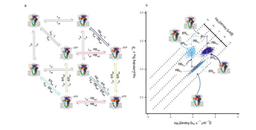Behind the paper: Untangling Zebrafish Genetic Annotation of TCOF1 and NOLC1
Published in Ecology & Evolution, Protocols & Methods, and Cell & Molecular Biology
TCOF1 is well-known for its role in craniofacial development, where mutations lead to Treacher Collins Syndrome (TCS), a disorder characterized by facial malformations caused by disruptions in neural crest cells. Yet, in zebrafish—a widely used model for genetic studies—the gene previously identified as tcof1 was suddenly renamed nolc1. To complicate things further, a different gene on chromosome 14 was proposed as the zebrafish TCOF1 orthologue.
This led us to question: What is the true relationship between TCOF1 and NOLC1 in zebrafish? And, how does this relationship play out across vertebrate evolution?
Using bioinformatics tools, we discovered that the zebrafish gene previously labeled as tcof1 actually serves as nolc1, with the functions of both genes seemingly carried out by a single gene. To resolve the confusion surrounding the gene on chromosome 14, we identified a new group of genes across fish species and proposed naming them LisH-containing Low Complexity Proteins (LLCPs). These genes resemble TCOF1 but lack essential features for full TCOF1 functionality.
One of the most exciting aspects of our work was building a phylogenetic tree of TCOF1 and NOLC1 across vertebrates. This revealed that TCOF1 orthologues are primarily restricted to tetrapods, including amphibians and coelacanths, suggesting a significant evolutionary event in the shift from aquatic to terrestrial life. The evolution of TCOF1 may have been key to the development of complex craniofacial structures in tetrapods, a feature absent in zebrafish and other non-tetrapods.
Beyond the technical challenge of reconciling gene annotation, our work also speaks to the importance of accurate database entries. Gene misannotation in model organisms like zebrafish can lead to far-reaching consequences in biomedical research. By leveraging computational tools available as free web-based resources, we hope our findings will inspire others to address similar orthology issues in other species.
Ultimately, our study untangles the complex relationship between TCOF1 and NOLC1 in zebrafish and highlights the evolutionary paths that shape the genetic architectures of vertebrates.
Follow the Topic
-
Journal of Molecular Evolution

This journal covers experimental, computational, and theoretical work aimed at deciphering features of molecular evolution and the processes bearing on these features.




Please sign in or register for FREE
If you are a registered user on Research Communities by Springer Nature, please sign in